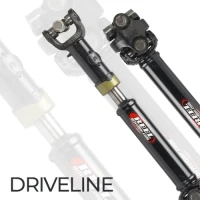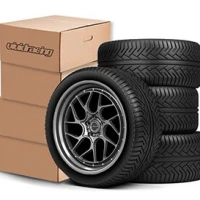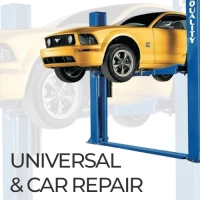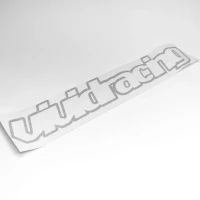Save with our Tax Refund Sale - Shop Now
Helmets - Race Helmets
Our premium selection of helmets at Vivid Racing, designed for automotive enthusiasts who prioritize safety without compromising style. Our collection features cutting-edge designs and advanced technology, ensuring you stay protected on the track or during spirited drives. Whether you're a racer or a weekend warrior, these helmets provide the perfect blend of comfort, durability, and performance to enhance your driving experience. Gear up and hit the road with confidence!

Why Should I Buy Racing Helmets?
If you decide to head to the track, whether it is an autocross in a large parking lot or a time-trial event at a closed-course race track, you will need more than just your car keys and driving skills. You are going to need a helmet. Most sanctioning bodies from drag strips to local autocross events require some sort of certified helmet.
One thing you wish you never will need is a helmet. Many people call this safety device "crash helmet," something that you definitely never want to use it for, but for which it is meant to be used. Such helmets are really important to shield the brain during a crash.
When it comes to motorcycles, a racing helmet will protect your head and face while riding and in the event of an accident – which you really wish to never happen. These helmets are designed with high speed in mind. Their aerodynamics help them cut through the air.
Full Face Helmets
Commonly referred to as a "sportbike'' helmet, a Full Face motorcycle helmet provides the best coverage, protection, and structural integrity. The "sportbike" classification, however, while highly prevalent, is a drastic misconception. Ya see, the laws of motorcycling are not governed by some tyrannical 5th Avenue style consultant who expressedly forbids any deviation from preconceived notions of motorcycle helmet segmentation. Fortunately, the idea of full face helmets for a multitude of riding styles is something that is gaining traction in the industry, and for good reason. Generally speaking, the enclosed design of full face motorcycle helmets provide a few notable improvements over their counterparts.
As was already mentioned, and this is most important, the full face design allows these helmets to be more protective. Plain and simple. When compared to half helmets, open face helmets, or even modular helmets, the full face stands atop the podium in that regard. With one-piece, complete coverage, the outer shell of the helmet is more inclined to retain its structural integrity in the event of an accident than a modular, which is hinged together with a mechanism that presents a point of weakness. As far as how the full face compares to half or three-quarter helmets in terms of protection, well, that one needs no elaboration. The advantages of full face helmets do not end there, however. Additionally, these helmets tend to be quieter as their encompassing design allows for fewer areas of wind turbulence and their attention to aerodynamics provides a smoother path through the air around them. Many of these helmets will also provide a greater range of upgrades and interchangeable pieces. From replacement interiors, to alternate face shields (Pinlock lenses anyone?), internal drop-down sun visors, and improved Bluetooth communicator compatibility, the features that come with full face helmets are only becoming more robust as time goes on. Some complaints about full-face helmets are that they are too snug and lead people to feel constrained, especially with the fitment in the cheeks. When sizing a full-face helmet, it is essential to keep in mind that the cheek pads will break-in up to 20% after prolonged useage. As referenced in helmet fitment manuals direct from the likes of Shoei and their peers, often times you should be in a smaller size than you initially think. Additional reasons that people don't feel inclined to wear full face helmets can include poor fitment for their head shape, perceived lack of visibility, or even just the fact that individual riders prefer to feel the wind in their face. While the first two reasons can easily be fixed by finding a lid that has a more ergonomic interior and the fact that the "field of vision" argument has been debunked by science for years, the latter argument is strictly preferential and totally legit. Sometimes it is nice to just feel that wind. No arguments here. If you have any intentions of taking your bike to the track, it is important to note that you will need to be wearing a full face helmet. You will also have verify the requirements that your individual track requires with regard to helmet safety standards such as Snell, ECE, and a handful of others.
Features:
- Internal airflow geometry
- Continuous venting system
- Sculpted neck roll
- Prolock positive shield locking system
- Removable molded breath deflector
- Removable Hydradry 3-piece moisture wicking liner
Modular Helmets
If two riders pulled up side-by-side to you at a stop sign, and one was wearing a modular while the other was in a full face, the difference between the two lids should be almost indistinguishable. While the modular helmet is closed, it looks (and for the most part acts) like a full face in just about every way. The difference resides in what the helmet can do when the bikes are parked. The feature that sets modulars apart from other helmets is their ability to open at the chin bar, rotating upward, and thus leaving the face of the rider to bask in the sweet sunshine of a ride well-taken.
Modular helmets are the intermediary between full face and open face helmets. They are extremely popular with the long-range touring crowd who spend numerous hours in the saddle and like to take any opportunity to crack open the chin bar at a stop. It is a great option to have, and for the most part, comes at little cost when compared to the alternative full-face. Considering the fact that modular helmets can incorporate all of the great features of a full face, with a bit of added functionality, it isn't difficult to see why they are so sought after. As alluded to earlier, however, modular helmets do have their own unique complaints. In addition to the arguments against full face helmets, modulars come with three additional considerations. First and foremost, the mechanism that allows for the operation of the lever action chin bar tends to create a structural weakness in the helmet itself. While it is not massively diminished in its capabilities, the inclusion of a break in the solid outer shell can result in a reduced ability to handle a direct impact. As such, they tend to not meet the stringent safety standards of Snell certification. That being said, modulars sold in the United States still meet the required DOT standards and many meet European ECE regulations. So, they are still plenty protective. Secondly, modular helmets have a reputation of being slightly heavier and more noisy than their full face counterparts. This, again, is due to the mechanism. Introducing more materials (often metal) to the outer shell to allow for the lever-action to work also has the effect of adding more weight and overall size to the helmet. At the same time, the interruption in the solid shell of a full face that is needed for the modular to open up creates the need for a seal at the break point, and thus provides the outside air a resistance point that can create a bit of extra turbulence. An exception to this can be seen in the top-end options such as the Schuberth C3 Pro, which is so expertly designed that it is in fact one of the quietest (if not THE quietest) helmets in the world. One final note of extreme importance, modular helmets are not designed to be worn in the open position while operating a motorcycle. It would basically be like riding with a big sail on the top of your noggin'. No bueno, and totally not within the safety certifications. The chin bar should only be lifted while stopped. As with the Schuberth C3 Pro and relative noise levels, however, there is one exception to this rule, and that can be found in the Shark Evoline Pro, which allows for the chin bar to be pulled all the way back and locked in. Hopefully more modulars will follow suit, thus adding yet another advantage to this helmet type.
Dual Sport Helmets
Dual Sport motorcycle helmets are full face lids that have been specifically crafted to meet the rigors of off-road riding, as well as those that can be found along the asphalt. These are some of the most recognizable helmets that you will see and have the tendency to look like the headgear of some futuristic space warrior. These helmets are best utilized by riders who are literally going to split their time between the trails and the road 50/50.
The features of the dual sport helmet that are most notable are the inclusion of a pronounced peak and an expanded face shield. These are pulled from the off-road world and serve to provide riders with an advantage when they take the road (or more accurately, the path) less traveled. While the peak works to deflect dirt, stones, and other debris while simultaneously providing shading for the eyes, the expanded eyeport often allows for riders to strap on a pair of goggles (if they choose) that help to reduce dust and dirt that can be kicked up through the opening at the base of the jaw. If you are not legitimately riding with a 50/50 split, a true dual sport helmet can cause a few distractions. For example, the peak. While it works great for its intended purpose, it is important to consider that wind will grab if you are doing many highway miles. At the same time, the overall aerodynamics of the outer shell itself are not quite as adept at cutting through the air as are full face, modular, and even open face helmets.
Features:
- Lightweight carbon-aramid-fiberglass shell
- Three shell sizes: XS-MS, ML-XL, 2XL
- Tool-less, removable chin vent guard
- Five vents: adjustable chin-vent, two brow inlets, 2 extractors
- Panoramic, Pinlock-ready visor
- Adjustable peak to reduce sail effect
- Double-D strap
- Speaker pockets
Dirt Bike and Motocross Helmets
From tormentors of trail to masters of MX, anyone who likes to get dirty on two wheels needs a good off-road helmet to protect their melon. Motocross helmets are specifically designed to perform and protect under the unique conditions of off-road riding. Peak visors are used to deflect roost from other riders as well as offer some relief from sun glare. Wide view ports allow for the use of goggles, which better protect the rider’s eyes from dust and debris. The open eye port, in concert with aggressive venting and an elongated chin bar, provides more open space around the rider’s face, facilitating better air flow, a necessity under the more strenuous nature of off-road riding.
Modern dirt bike helmets benefit from the technology developed for street helmets and are made from the latest materials. They are subject to various safety standards and certifications, ensuring that rider protection is top priority and with many different options to choose from, there is a helmet to suit any rider in any price range.
Features:
- Durable, lightweight polymer shell
- Dual-density EPS liner
- Integrated rubber nose guard
- Removable and washable comfort liner and cheek pads
- True Functional Ventilation (TFV) airflow system with channeled EPS
- Replaceable high airflow mouthpiece
- Included fleece helmet bag
- ECE and DOT approved
Snowmobile Helmets
Snowmobile helmets do so much more than safeguarding your head in a crash. A snowmobile helmet protects your face against windchill and preserves your vision with various anti-fog technologies. Modular and full face helmets with integrated face shields provide the best defense against frigid temperatures when riding in open terrain at high speed. A modular helmet is a full face helmet that allows the front portion of the helmet to lift up. This feature is perfect for enjoying a conversation, snack or drink, or simply getting some fresh air. Face shields are available in either dual lens or electric heated configurations. A dual lens shield works great for most riders to prevent fog build up. A snowmobile helmet with an electric shield takes fog prevention to a whole other level. Not only does an electric shield virtually eliminate fog, but it also helps to prevent ice buildup on your face shield. While full face and modular helmets are best for open terrain, snocross 'dirt bike-style’ helmets are better suited for backcountry riding. A dirt bike style helmet is generally lighter and features more ventilation for keeping your cool when riding technical terrain. With the option of goggles, a backcountry rider can choose very specific lens types for increasing contrast in various lighting conditions. Whether you’re blasting down your local trails or exploring the backcountry, Vivid Racing has a snowmobile helmet with the features you need.
Open Face Helmets
The classic motorcycle look that comes with a fashionable open face helmet is all the rage nowadays. Harking back to yesteryear, strapping on the open face helmet, pulling a bandana over your grill, throwing your leg over a rugged cafe racer or mean street cruiser, and thundering down the road is an appealing idea for many a rider. As with all of the helmets that we have discussed, there are pros and cons to keep in mind when looking to go this direction. When making your eventual decision, it helps to take them into consideration.
Mainly, the open face helmet is a stylistic choice. What they generally lack in protective features they make up for with the freedom of a bit of wind in the face and a tangible attitude that permeates their throwback ways while saturating the rider in a timeless essence of swagger. Residing somewhere between a half helmet and a full face, open face helmets come in various degrees of transition along the spectrum. From the rudimentary shell/interior construction to far more robust designs that include face shields, internal sun visors, and even specially designed Bluetooth housings such as can be seen on the Bell Mag 9 Sena, the half helmet is one of the most iconic helmet styles to be found on two wheels. You can even find options such as the Scorpion EXO-CT220, Arai XC, and Shoei J-Cruise, that have venting, which is something that traditionally would not be on the list for this style of motorcycle lid. Conversely, open face helmets do have some areas of detraction as well. As with the half helmets, the main area of concern is their lack of coverage, and thus protection. While they do cover more of the head than their skimpier brethren, they also leave the face open to more incoming unpleasantries than full face or modular helmets. At the same time, they tend to be more noisy, less aerodynamic, and often offer diminished features when compared to the same full-coverage options.
Features:
- Meets or exceeds DOT standards
- Advanced aerodynamic shell design constructed using thermoplastic poly-alloy
- Hypo-allergenic and antimicrobial nylon helmet liner and cheek pads
- Removable snap-on visor
- Forehead ventilation
Half Helmets
Sometimes, riders just want to have as little between them and the open air as possible. Freedom of the road. Riding on unencumbered. That is the essence of the motorcycle half helmet. As with the full face helmet generally being considered a "sportbike" lid, half helmets have the tendency to be seen as cruiser specific. While that is more often than not the case, it is also important to note their popularity with the scooter crowd, as well as the fact that they are becoming more popular with the urban commuter as well. Historically, half helmets have been rather basic. Nothing much to talk about other than a few different style options and maybe a different chin buckle or two. However, recent improvements to design, fitment, and the housing of features has made for a wider array of possibilities for those in search of half helmets for their motorcycle adventures.
While the standard, simplistic, bare-bones half helmet is still quite popular, the inclusion of features such as drop down sun visors, fitment optimization systems, and even specialized face masks, such as the ones that have shown enormous popularity on the Bell Rogue, have really made inroads with this segment of riders. Also, manufacturers have sought to combat the age-old "bobblehead" look of many half-helmets, wherein the lid sits high on the top of the head and creates the look of one of those lollipops that you get out of the candy bin at the bank. Contemporary half-helmets, however, have renewed focus on being much more than just a bucket that plops down on top of your head, and have even been in the minds of Bluetooth communicator makers who have introduced multiple options that can be utilized without a full face helmet to mount to. Of course, any discussion of the downfalls of half helmets begins with the fact that they are the least protective. From bugs, to road debris, to the lack of coverage in an accident, half helmets are the bare minimum when it comes to riding in a lid that meets official safety certifications. With a plethora of novelty helmets out there, it is super important to ensure that the half helmet you do decide upon meets DOT standards, though don't waste your time looking for one that comes Snell or ECE approved… as they are yet to exist (and in all likelihood never will). The long and short of it is that in an accident, very little of the areas that you are most likely going to need protected will be helped at all by a half helmet. Other considerations include audio quality with bluetooth communications due to wind noise, fewer internal options for replacement liners, and buffeting due to lift that can occur at highway speeds.
Features:
- Sleek shape
- Lightweight, injection-molded polycarbonate shell
- Clear coated, painted shell
- Coolmax interior moves moisture from the head, keeps you cool and comfortable
- Removable zip out rear neck curtain for added warmth
- Rear neck curtain has built in speaker pockets
- Detachable short visor
- Adjustable forehead vent for increased ventilation
- Padded chin strap
Motorcycle Helmet Safety Standards
When deciding on the type of motorcycle helmet that best fits your riding style, it’s essential to find one that meets motorcycle helmet safety standards.
In the United States, a DOT (Department of Transportation) helmet may be a requirement by law in your state. Check out our state-by-state guide to motorcycle helmet laws to learn more. A helmet must have a DOT certification to be sold in the US as well. Other countries or regions around the world have similar certifications, and there are 3rd parties that offer certification too.
Most certifications are similar in what they test on each helmet, with slight variations on the certification values to meet or exceed for impact forces, energy distribution, and the rider’s head retention.
If you choose to wear a helmet — which we highly recommend — make sure it meets the testing standard or goes beyond what is required for your location.
The Anatomy of the Safest Motorcycle Helmet
Outer Shell
The rigid outer shell is the outermost, colored part of the helmet you view from the outside. This usually consists of Kevlar, carbon fiber, polycarbonate, molded plastics, or a combination of those materials. Its primary function is to protect your head in the event of impact or abrasion and to prevent penetration from outside objects, such as rocks, insects, etc.
Impact Absorbing Liner
On the inside of the outer shell is the impact-absorbing liner, typically made from EPS (expanded polystyrene) foam. The primary function of the liner is to absorb shock and displace energy during an impact. The outer shell keeps foreign objects from penetrating the helmet. The inner layer keeps the energy of the impact from transmitting to your head. Some layers may be made from a single-density foam. Other models include a dual-density layer (two layers combined) for added energy displacement during an impact.
Padded Comfort Layer
The padded comfort layer is the area that your head rests against while you’re wearing the helmet. It typically consists of an open-cell foam covered in a second cloth material, designed to wick away sweat and keep you cool while riding. It is usually removable for cleaning purposes and is interchangeable to accommodate different head shapes. Check with your helmet manufacturer to see if they offer different comfort liner shapes to fit your head shape best.
Retention System/Chin Strap
The helmet retention system, also called the chin strap, is secured below your chin to keep the helmet on your head while you ride. It’s made from a woven material and fastened with two d-rings to stay secured. The chin strap should only allow for two fingers between the strap and your chin when adequately secured. The strap is usually partially covered with a similar cloth as the comfort liner to wick away sweat and for comfort as it rests against your skin.
Vents
The ventilation system on the helmet is meant to keep the rider’s head cool and help evaporate off the seat as best as possible. Ventilation is more prevalent on full-face and ¾ helmets but can vary by type, depending on the manufacturer. Most vents have the option to open and close for different weather conditions. You may want it fully open during warmer months, fully closed during cooler months, and somewhere in-between during other parts of the riding season. They are adjustable, which makes them a good option for each rider’s comfort.
Face Shield/Visor
The face shield or visor is a safety feature to keep bugs, debris, and everything else out of your helmet. They’re usually designed to be removable for cleaning purposes or swap out for another shield/ visor. They come in customizable colors and tints for different riding environments. Be sure to ride with a clear visor in low light levels so you can see the road and environment.
Cheek Pads
Full-face and ¾ helmets have cheek pads inside the helmet that rest against your cheeks. They are removable for cleaning and are customizable to accommodate different head shapes. They are an added comfort feature similar to the padded comfort liner, intended to provide extra protection to your face and help keep the helmet in place on your head.
What Should I look for in a Helmet?
There are various choices to consider when purchasing a helmet. The first is the certification. You're going to want to look for a Snell SA rating for most auto racing enthusiasts. You should understand how helmets are classified, and when you shop around you can see a few different decals in helmets.
A D.O.T. decal is really motorcycle helmets on the public roads. You will see an M rating which is again for motorcycles and you will also see an SA rating. The SA rating also comes with a year associated with it. The year listed on the decal isn’t the year the helmet was manufactured, it is the Snell standards associated with that particular year. You may also run across F.I.A. ratings that come out of Formula 1 and Europe.
How to Find Your Motorcycle Helmet Size
The fit of the helmet on your head is critical to finding the best helmet for you. When you start looking for a helmet, you should take a measurement entirely around your head, just above your eyebrows. That will give you an idea of what size of the helmet you need, from an extra small to an extra-large. Each manufacturer’s helmet will fit slightly differently, so a small in one brand may fit like a medium in another.
You should always try a helmet before purchase and checked for fit. When trying it on, the chin strap should be tight enough that only two fingers will fit between the strap and the bottom of your chin. You should not feel any gaps around your head, and the helmet should not be so tight that it’s uncomfortable.
You should wear the helmet for a handful of minutes to get the feel of it, and while wearing it, you should attempt to move it around with your hands. Your cheeks should move as you move the helmet, but the helmet shouldn’t rotate or move in any direction without moving your head.
Testing the fit on the chin strap means you should look down toward your chest and try to push the back of the helmet upward. If you can push it up a lot, the helmet isn’t the best fit for you.
The Snell Certification
You think that the engineers who certify helmets spends their days smashing stuff. The certification got its name when a racer by the name of Pete Snell died in a crash when racing in 1956. Since 1957, the Snell Memorial Foundation has been certifying helmets.
Manufacturers have their own choice in how they build a helmet, Snell does not mandate a construction process, they only designate the tests the helmet must pass in order to be certified. The goal at Snell is impact energy management. That means when the outside of your helmet stops, the inside of the helmet should let your head “ride down” the impact by compressing the inner layer of the helmet, so your brain doesn’t feel the heavy hit.
And just how do they test these helmets? They smash stuff all day.
Benefits of a Racing Helmet
- Increased safety while racing/riding
- Great comfort and protection from the elements
- Boost your confidence level due to the feeling of security
BEST HELMETS SECTION [According to RevZilla]
Best full face helmet: Shoei RF-1400 helmet
The biggest helmet release of the last year had to be the RF-1400, Shoei’s update to the legendary RF-1200 and the latest in a long line of RF-series helmets. Based on our testing, the RF-1400 isn’t just an improvement over the previous model. It’s a fully qualified successor to the RF-1200’s throne. Meet our new gold standard for do-anything street helmets.
The RF-1400 utilizes Shoei’s AIM+ construction and carries DOT and SNELL 2020 certifications. The new shape offers improved aerodynamics and a quiet, comfortable ride. There are four shell sizes and an intermediate oval fit that works for a broad range of riders. We especially like the revised interior padding and the optimized ventilation setup. And as an added bonus, the RF-1400 comes with a Pinlock visor for fog-free vision.
Best budget full face helmet: ICON Airflite helmet
For all the RF-1400’s virtues, it isn’t cheap. Our budget alternative is the ICON Airflite, a polycarbonate-shelled street lid with an intermediate oval fit and loads of graphic options.
The Airflite has been a fan favorite since it debuted a few years ago (it won our “People’s Choice” last year), and it’s only improving with time. ICON just added a MIPS option for rotational impact protection, for just a few bucks more. Also, the Airflite is DOT/ECE certified so you can ride with confidence. Other niceties include the drop-down sun visor, Hydradry internal liner, and unique style.
Best dirt helmet: Fly Racing Formula CC helmet
For 2021, our top dirt helmet choice is easily the Fly Racing Formula CC. We loved the standard Formula last year, and even gave it our top honors in the 2020 Gear Guides, but they’ve since unveiled the CC version that we love even more.
CC stands for Carbon Composite, and this variant means that the Formula CC packs the same safety tech and style as the Formula, but at $200 less. A measly two-ounce weight over the full-carbon Formula gain is the only drawback.
You get a Tri-Weave shell that combines the strengths of carbon fiber, DuPont Kevlar, and fiberglass, all in one aggressive shell. The Formula CC carries over Fly’s RHEON impact protection technology that handles linear and rotational impacts at low speed, both crucial in the dirt. There’s also Conehead EPS technology to handle high- and low-speed impacts. Consider the phenomenal ventilation and class-leading comfort, and it’s easy to see why we recommend this helmet.
Best budget dirt helmet: Bell MX-9 MIPS helmet
For dirt riders on a budget, we prefer the MX-9 MIPS from Bell. These helmets start around $160, and that nets you a lightweight polycarb shell, substantial airflow, and DOT/ECE certification.
The star of the show here is that MIPS technology to mitigate rotational impacts in the dirt. Bell’s MX-9 MIPS is a standout in its class based on MIPS alone, but the good stuff doesn’t stop there. You get three shell sizes, an EPS-lined chin bar, and a five-year warranty, plus plenty of graphic options.
Best modular helmet: AGV Sportmodular helmet
We’re thoroughly impressed by the Sportmodular, AGV’s top-shelf modular offering. Modular customers demand comfort and safety while the helmet is in its closed position, plus easy chin bar deployment and high-quality moving parts. Look no further than the AGV Sportmodular, in our opinion.
Its full 3K carbon fiber construction means this is the lightest modular helmet we’ve ever tested (three pounds, two ounces), and with a shell inspired by the radical AGV Pista GP R, the Sportmodular has certainly earned the “sport” part of its name. Even the D rings on the chinstrap are titanium to shave weight! On the modular side of things, we find a fully carbon chin bar with metal opening/closing components and an Integrated Ventilation System. It also boasts an internal sun shield, pressure-free interior, and plush neck roll. The whole package is DOT/ECE approved and glasses-friendly.
Best budget modular helmet: Sedici Sistema II helmet
Seeking a sub-$300 modular helmet with maximum bang for the buck? Our choice is the Sedici Sistema II. A recent revamp of this lid resulted in a full fiberglass and aramid shell (!) with an improved design for better aerodynamics.
Less turbulence means less fatigue, which means more riding. The whole package weighs an impressive three pounds, 12 ounces in a size medium. We like the adjustability built into the pads so that you can customize the fit to your noggin. The Sistema II goes on to feature some more modular must-haves, such as a drop-down sun visor, removable liners, and a Pinlock-ready face shield. (The Pinlock is not included on this helmet.) Bump up to a carbon version for added lightness, or the Parlare model for built-in Bluetooth comms.
Best ADV helmet: Arai XD-4 helmet
When your rides regularly take you on- and off-road, it’s time to consider an ADV helmet. We’re huge fans of adventure riding here at RevZilla, and for our money, the Arai XD-4 is the helmet to have.
Countless riders have trusted Arai’s XD series to keep them safe and comfortable over the years, and the XD-4 is the pinnacle of their craft in this territory. Features include SNELL M2020 certification, a fully customizable interior, and the best ventilation of any ADV helmet we’ve tested. These helmets are individually handmade with impeccable fit and finish to boot. They’re aerodynamically stable, too, so the peak won&rsq

.jpeg?q=90&p=thumb&w=200&h=200)











.jpeg?q=90&p=thumb&w=40&h=40) Brakes
Brakes  Driveline
Driveline  Electronics
Electronics  Handlebars & Controls
Handlebars & Controls  Package Deals
Package Deals  Wheel Accessories
Wheel Accessories  Wheels by Vehicle
Wheels by Vehicle  Tools and Maintenance
Tools and Maintenance  Universal & Repair
Universal & Repair  Vivid Racing Gear
Vivid Racing Gear 



